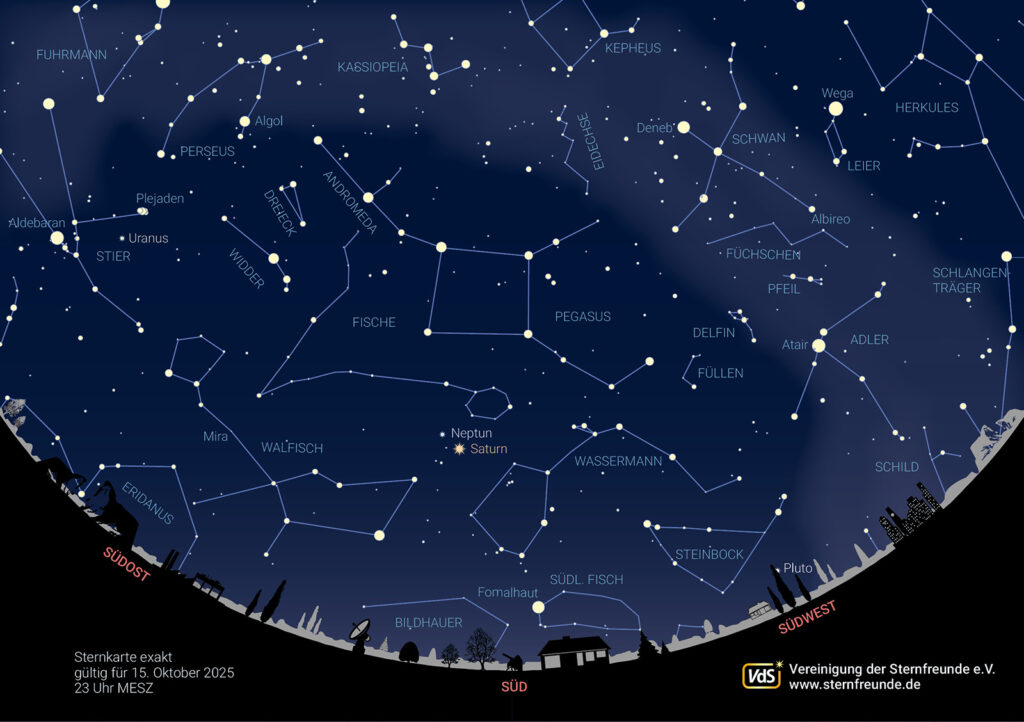The starry sky in October 2025
In September, the sun crossed the celestial equator in a southerly direction. As a result, the nights are now longer than the days again. Summer can still be seen in the sky in the early evening hours: this is particularly evident in the so-called summer triangle, which consists of the stars Vega in Lyra, Deneb in Swan and Atair in Eagle.
Around midnight - the attached star chart refers to 11 p.m. summer time - the large autumnal quadrilateral dominates the sky. Three of its stars belong to the constellation Pegasus, while the upper left corner is assigned to the constellation Andromeda.
Below Pegasus and Andromeda lie the zodiacal constellations of Capricorn, Aquarius and Pisces. However, these consist mainly of faint stars, so you need a dark sky without any disturbing light sources to observe them. In this region, only the star Diphda in the constellation of Whale stands out clearly. Close to the southern horizon, the bright star Fomalhaut is also visible in the constellation of the Southern Fish.
Of the planets, Saturn is in the constellation Pisces and soon reaches the meridian, followed shortly afterwards by Neptune. In the east you can observe Uranus, which can be found between the two open star clusters Hyades and Pleiades in the constellation Taurus. For both planets you will need at least binoculars and a star chart.
The moon phases in October 2025

The planets in October 2025
Mercury appears to be next to the sun in the daytime sky, it cannot be observed.
Venus is past its prime as a morning star, but can still be observed in the morning sky.
Mars moves invisibly through the southern constellations of the zodiac in the daytime sky.
Jupiter in Gemini will soon be visible all night long. On October 13/14, the waning crescent moon will pass by Jupiter.
Saturn becomes the object of the first half of the night. On October 5/6, the almost full moon passes close to Saturn.
Uranus in the constellation Taurus will reach its opposition (position opposite the Sun as seen from Earth) at the end of November. With a brightness of 5.6 mag, it is already easy to observe with binoculars.
Neptune is in the constellation of Pisces in the weeks following its opposition, so it rises earlier in the evening and is easier to observe. There will be another conjunction with Saturn on October 1.
In modified form from The starry sky in October 2025 - Association of Star Friends e.V.

